In 2025, the demand for multiport USB hubs is set to soar, driven by remote work trends and evolving tech needs. This article delves into the market dynamics, types, and crucial selection criteria for port hubs, offering professional buyers valuable insights and guidance for making informed decisions.
Table of Contents:
– Market Overview of the Multiport USB Hubs
– Detailed Introduction and Analysis of the Multiport USB Hubs Market
– Key Factors When Selecting a Port Hub
– Related Considerations for Port Hubs
– Future-Proofing Your Port Hub Investment
– Wrapping Up
Market Overview of the Multiport USB Hubs
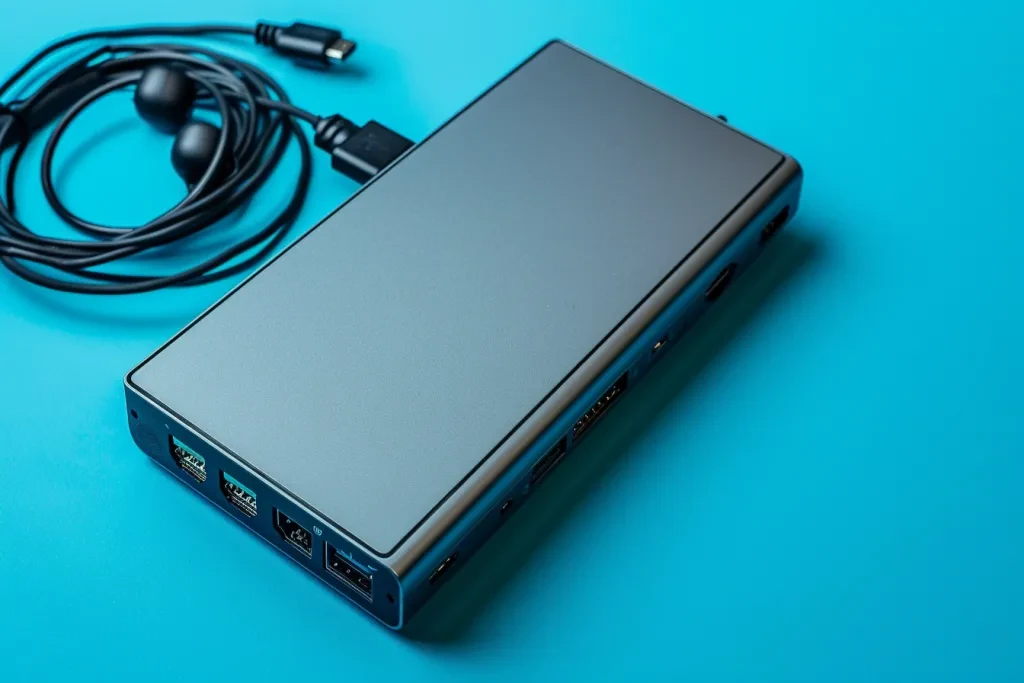
The Multiport USB Hubs market has shown significant growth over the past few years and is expected to continue this trend through 2030. The market size grew from USD 4.69 billion in 2023 to USD 5.14 billion in 2024, with a projected compound annual growth rate (CAGR) of 9.72%. By 2030, the market is anticipated to reach USD 8.98 billion. This growth is driven by the increasing adoption of USB-C ports, the rising number of peripheral devices, and the growing trend of remote work setups.
The market can be segmented by product type, port type, power source, application, distribution channel, and material. It includes various types of hubs such as Specialty USB Hubs, Desk Hubs, Gaming Hubs, Industrial Hubs, Travel Hubs, and Standard USB Hubs. The port types include USB-A Ports and USB-C Ports, with configurations ranging from single to multiple ports. Power sources are categorized into Bus-Powered, Dual Power Source, and Self-Powered hubs. Applications span across consumer electronics, personal computers, smartphones, tablets, gaming, industrial use, and office equipment.
Geographically, the market is divided into regions such as the Americas, Asia-Pacific, Europe, the Middle East, and Africa. Each region exhibits unique demand patterns influenced by local economic conditions, technological adoption rates, and consumer preferences. The Americas, particularly North America, have been leading in terms of market share, while the Asia-Pacific region is expected to show the fastest growth due to the increasing penetration of consumer electronics and the rapid adoption of new technologies.
Detailed Introduction and Analysis of the Multiport USB Hubs Market
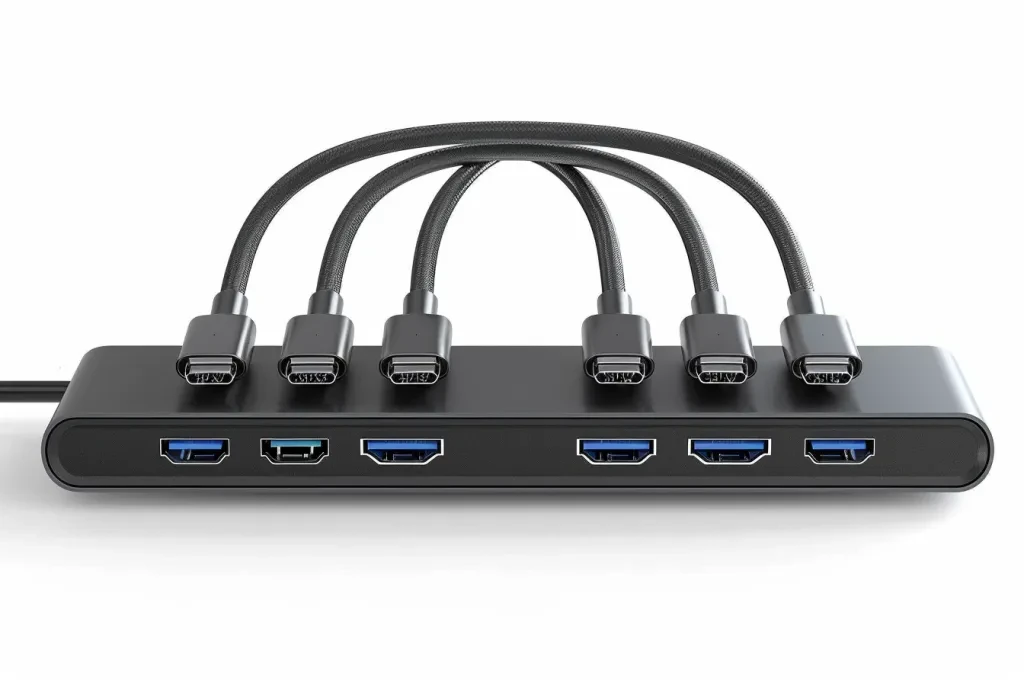
The multiport USB hubs market is characterized by a variety of performance benchmarks and market dynamics. Key performance benchmarks include data transfer speeds, power delivery capabilities, and compatibility with various devices and operating systems. With advancements in USB technologies like USB 3.2 and USB4, hubs now offer data transfer speeds up to 40 Gbps, significantly enhancing productivity for users who require high-speed data transfer.
Market share dynamics reveal a competitive landscape with key players such as Anker Innovations Ltd., Belkin International Inc., and StarTech.com Ltd. These companies focus on product innovation and strategic partnerships to maintain their market positions. Economic influences like increasing disposable incomes and the rising demand for smart devices are driving market growth. However, the rapid pace of technological change poses a challenge, as products can quickly become obsolete.
Consumer behavior has shifted towards a preference for multifunctional and compact devices. This trend is evident in the growing popularity of hubs that integrate multiple functionalities such as HDMI ports, Ethernet jacks, and SD card readers. Seasonal demand patterns show a spike in sales during the back-to-school season and the holiday shopping period, driven by increased purchases of laptops and other electronics. Distribution channels are also evolving, with online stores and brand-owned retail outlets gaining popularity due to the convenience they offer.
Recent innovations in the market include the integration of Thunderbolt 3 technology, which allows for even faster data transfer and enhanced power delivery capabilities. The product lifecycle of multiport USB hubs is relatively short due to rapid advancements in technology and changing consumer preferences. Digitalization and the rise of e-commerce have further accelerated market growth, providing consumers with easy access to a wide range of products.
Environmental regulations and consumer awareness regarding sustainability are influencing product development. Companies are increasingly focusing on producing eco-friendly hubs using recyclable materials. Customer pain points such as compatibility issues and data security concerns are being addressed through improved product designs and advanced safety protocols. Brand positioning strategies involve highlighting unique selling points such as high data transfer speeds, durability, and multi-functionality to differentiate products in a crowded market.
Niche markets, including the gaming industry and small-to-medium enterprises (SMEs), present significant growth opportunities. Gamers require high-speed connections and multiple ports for peripherals, while SMEs are investing in remote working infrastructure, driving the demand for multiport USB hubs. Overall, the market is poised for robust growth, driven by technological advancements, strategic market positioning, and a keen focus on consumer needs.
Key Factors When Selecting a Port Hub
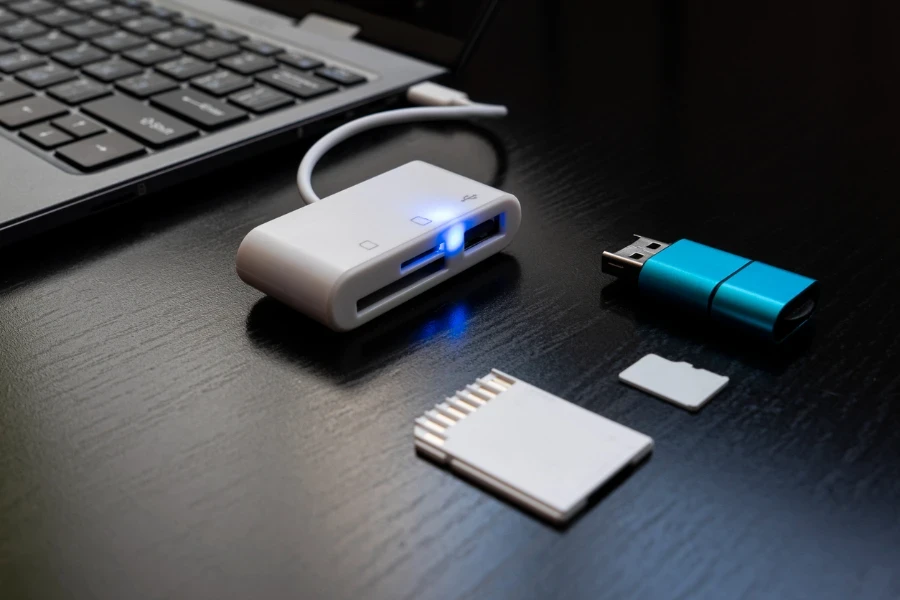
When selecting a port hub, several key factors ensure optimal performance and compatibility with your devices. These factors include the port hub’s types, styles, performance, functionality, design, technical specifications, and price range. Making an informed decision involves evaluating each of these aspects in detail.
Types and Styles of Port Hubs
Port hubs come in various types and styles to cater to different needs and preferences. Common types include USB-A hubs, USB-C hubs, and Thunderbolt hubs. USB-A hubs are widely used for their compatibility with older devices. USB-C hubs are favored for faster data transfer rates and versatility. Thunderbolt hubs offer the highest performance with speeds up to 40 Gbps, ideal for professional use.
Port hubs also vary in style. Desktop hubs are designed for stationary use and often have multiple ports and features like power delivery. Portable hubs are compact and lightweight, perfect for on-the-go use. Docking stations provide a comprehensive solution with various ports, including HDMI, Ethernet, and SD card slots, transforming laptops into full-fledged workstations.
Performance and Functionality
Performance is crucial, especially for tasks requiring high-speed data transfer and power delivery. USB 3.2 Gen 2 hubs offer transfer speeds of up to 10 Gbps, essential for transferring large files quickly. Thunderbolt 4 hubs reach speeds of up to 40 Gbps, supporting multiple 4K displays and high-speed external storage devices.
Functionality is another important aspect. Some port hubs include features such as power delivery, allowing them to charge connected devices while in use. This is useful for laptops and tablets that rely on a single USB-C port for both charging and data transfer. Other functionalities to look for include support for multiple displays, Ethernet connectivity for wired internet, and SD card readers for quick access to media files.
Design and Aesthetics
Design and aesthetics impact usability and integration into your workspace. Sleek and compact designs are favored for their minimal footprint and portability. Aluminum casings add a premium look and enhance durability and heat dissipation. Some port hubs have an integrated cable, reducing clutter and making them more convenient to carry.
Color options and LED indicators also play a role in overall aesthetics. LED indicators provide visual feedback on the hub’s status, such as power and data transfer activity. Matching the color of the port hub with your devices or workspace can create a cohesive and professional appearance.
Technical Specifications
Understanding technical specifications is essential for ensuring compatibility and performance. Key specifications to consider include the number and type of ports, supported data transfer rates, power delivery capabilities, and compatibility with operating systems. For example, a port hub with multiple USB-C and USB-A ports provides flexibility for connecting various devices, while support for USB 3.2 or Thunderbolt 4 ensures high-speed data transfer.
Power delivery capabilities are particularly important for users who need to charge their devices while using the hub. A hub with 100W power delivery can charge laptops, tablets, and smartphones efficiently. Additionally, compatibility with operating systems such as Windows, macOS, and Linux ensures that the hub can be used with a wide range of devices.
Price Range and Budget
Port hubs are available in a wide range of prices, from budget-friendly options to high-end models. Budget port hubs typically offer basic functionality with a limited number of ports and lower data transfer speeds. Mid-range hubs provide a balance of performance and features, suitable for most users. High-end port hubs, such as those with Thunderbolt 4, offer the best performance, additional features, and superior build quality.
When setting a budget, consider your specific needs and use cases for the port hub. For general use, a mid-range hub with USB 3.2 support and power delivery may be sufficient. For professional use, investing in a high-end Thunderbolt hub with multiple ports and advanced features can be worthwhile.
Related Considerations for Port Hubs
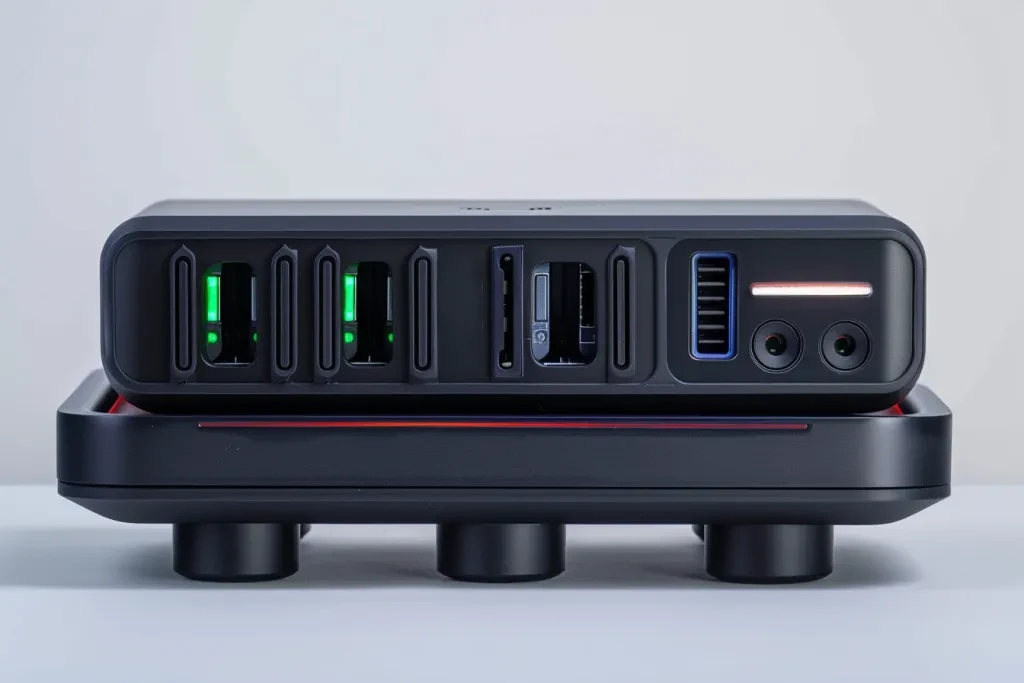
Compatibility with Devices and Systems
Ensuring compatibility is critical when selecting a port hub. The hub should support the devices you intend to connect, including laptops, tablets, smartphones, and peripherals. Compatibility with different operating systems, such as Windows, macOS, and Linux, ensures that the hub can be used across various devices without issues.
For example, a USB-C hub with support for power delivery and multiple display outputs is ideal for modern laptops and tablets that rely on USB-C ports for connectivity. Conversely, a USB-A hub may be more suitable for older devices that do not have USB-C ports. Additionally, some port hubs come with drivers or software that enhance compatibility and functionality, making them more versatile.
Durability and Build Quality
Durability and build quality ensure long-term reliability. Hubs made from high-quality materials, such as aluminum or reinforced plastic, are more likely to withstand daily use and potential wear and tear. Features like braided cables and reinforced connectors can also enhance durability and reduce the risk of damage.
When evaluating build quality, consider the manufacturer’s reputation and any industry awards or recognition the product may have received. Reviews and feedback from other users can provide insights into the hub’s durability and performance over time. A well-built port hub provides consistent performance and minimizes the need for frequent replacements.
Customer Support and Warranty
Reliable customer support and a comprehensive warranty are essential considerations when purchasing a port hub. A manufacturer that offers responsive customer support can assist with troubleshooting and resolving any issues that may arise. Additionally, a warranty provides peace of mind by covering potential defects or malfunctions.
When evaluating customer support, consider the availability of support channels, such as phone, email, or live chat, and the responsiveness of the support team. A warranty period of at least one year is standard for most port hubs, but some manufacturers may offer extended warranties for added protection. Reviewing the warranty terms and conditions helps you understand what is covered and any potential limitations.
Future-Proofing Your Port Hub Investment
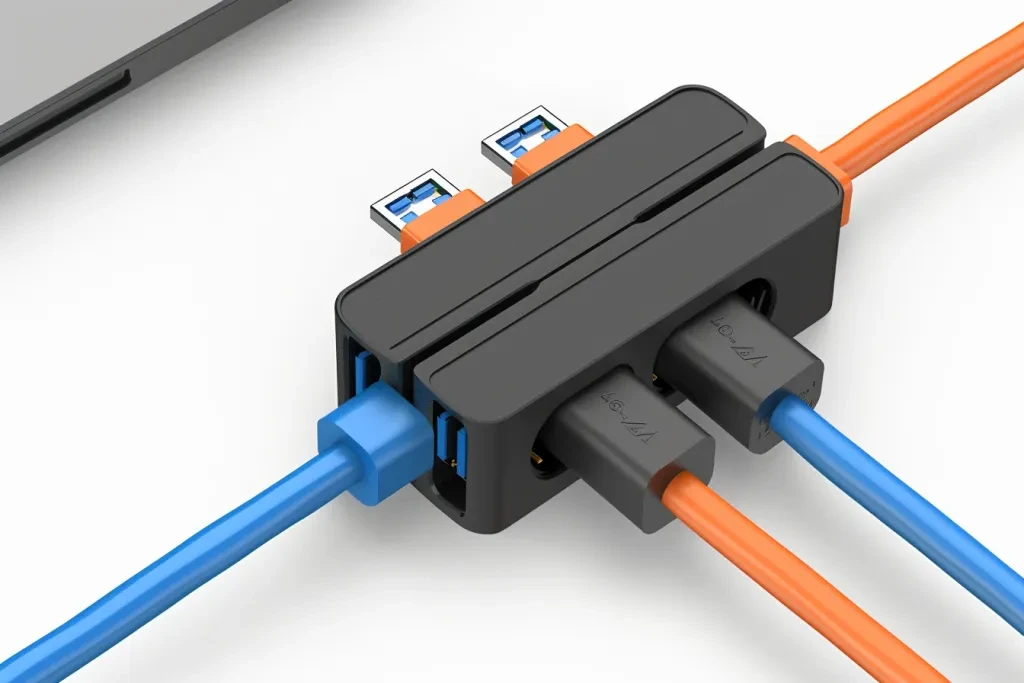
Upgrade Potential and Compatibility with Future Upgrades
Investing in a port hub that offers upgrade potential and compatibility with future upgrades is a smart decision. As technology evolves, ensuring that your port hub can accommodate new devices and standards will maximize its lifespan and utility. For example, a hub with Thunderbolt 4 support is future-proofed for upcoming devices that will leverage this high-speed connectivity standard.
Some port hubs are designed with modularity in mind, allowing users to add or replace components as needed. This flexibility can extend the hub’s usability and reduce the need for frequent replacements. Keeping an eye on emerging trends and technologies, such as USB4 and advancements in power delivery, can help you select a port hub that remains relevant in the future.
Energy Efficiency and Environmental Impact
Energy efficiency is important, especially for users who prioritize sustainability and reducing their environmental footprint. Port hubs designed to minimize power consumption while maintaining performance contribute to energy savings and reduce environmental impact. Features like automatic power-off when not in use and efficient power delivery enhance energy efficiency.
Manufacturers that prioritize environmentally friendly practices, such as using recyclable materials and reducing packaging waste, also contribute to sustainability. When selecting a port hub, consider the manufacturer’s commitment to environmental responsibility and any certifications or initiatives they support. Choosing energy-efficient and environmentally friendly products aligns with broader sustainability goals.
Resale Value and Return/Refund Policy
The resale value of a port hub can be important for users who plan to upgrade their devices regularly. High-quality port hubs from reputable manufacturers tend to retain their value better, making them easier to resell. Keeping the hub in good condition and retaining original packaging and accessories can also enhance its resale value.
A clear return and refund policy is essential for ensuring customer satisfaction. Understanding the terms and conditions for returns and refunds helps you make an informed purchase decision and provides recourse if the hub does not meet your expectations. Manufacturers that offer hassle-free return processes and flexible refund policies demonstrate confidence in their products and commitment to customer satisfaction.
Wrapping Up
In summary, selecting the right port hub involves evaluating various factors, including types, performance, design, technical specifications, and price range. Considering related aspects such as compatibility, durability, customer support, future-proofing, energy efficiency, and resale value ensures a well-informed decision. By carefully assessing these elements, you can choose a port hub that meets your needs and provides reliable performance for years to come.




